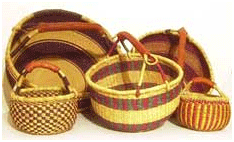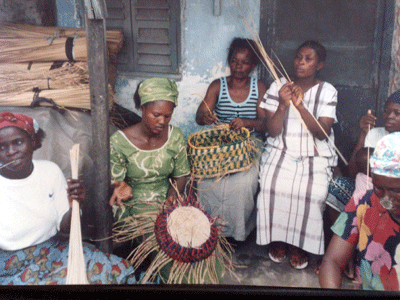Kwadwo Donkor was born in Ashanti in 1934 and attended Cape Coast’s prestigious Mfantsipim schools where, incidentally, he was Kofi Annan’s house-prefect. Between 1956-59 he studied history at the University of Ghana and was encouraged to use his piano skills for highIife by a group of university lecturers, which had formed the Achimota African Music Society (J.H.K. Nketia, Robert Sprigge, Ephraim Amu, and E.F. Collins).
As a pianist and highIife composer, Kwadwo Donkor, produced 20 albums 48 and numerous singles since 1958 with his APEMCO recording label and J\BJBIRAM publishing company.
From 1958 Kwadwo branched out into producing singles by guitar bands, such as E.K Nyame, Kwabina Okai, the Kumasi Youngsters and Kofi Djan, and by swing-jazz and calypso-influenced big bands ofE. T.Mensah’s Tempos and King Bruce’s Black Beats, – and Uhuru, with whom he later released a full album of his own compositions entitled ‘Big Sounds of Africa’.
Kwadwo produced and composed music as well as maintained a full-time career in the Ghanaian diplomatic service.
In the 1970s Kwadwo produced a live album of the 1972 National Brass Band Competition, released albums for the Ogyataana Band (including Obra Mu M’Asem) and a piano medley called ‘Ray Ellis Plays Highlife’.
During this period, Kwadwo also produced’ Ga Cultural Groups’ that played Ga folk tunes and local Accra street highlife. One was Wulomei, which he helped discover (with Saka Acquaye) and released its album ‘Walatu Walasa’; another was Dzadzeloi and its ‘Two Paddy Follow One Girl’ hit. He also used Uhuru to back flautist Oscar Sulley Braima with singer Eddie Ntreli in an Afro-beat/rock album entitled Oscar Sulley and the
N’zele Afrikana.
By the mid 1980s, Kwadwo set up his Abokyi Parts highlife dance band, which has made three albums. In 2000 Kwadwo became a Trustee of the newly-established Ghana Association of Phonographic Industries.
Rex Omar and Amandzeba Nat Brew
John Collins
Hewale Sounds
Kasena Nankeni: Dances
Nagla:
A dance performed by the Kasena Nankeni people of Paga and Navrongo in the Upper East Region of Ghana. In the olden days, it was performed at funerals but today, even though it still maintains this function, it can also be seen on most social occasions excluding marriage ceremonies. Movements in Nagla reflect the spirit of togetherness.
Kasena Nankeni: Culture
The Bolga Basket:
 TEA (spoken Te – A ) basket with handle is produced in Bolgatanga.
TEA (spoken Te – A ) basket with handle is produced in Bolgatanga.
Two types of weaving are done (and most weavers only know one of them): It is double weaving (two uprights and thin straw) and single weaving (one upright and thicker straw). If the basket has reached its size a mouth has to be done. Here uprights are combined and bundled round. The handle is woven inside that mouth, is combined in the middle and bundled round with straw. The end of the straws on the baskets are cut with a blade. The TEA is ready.
Now there is till the leatherwork to be one on the basket: The handle is sawn around with goatleather, which increases the comfort of carrying a basket and also increases its stability and durability.
The Bolga Basket Weaver:
 In north-east of Ghana, near to the border to Burkina Faso, Bolgatanga is situated, where the Frafra are the original settlers. (Scientifically spoken the Frafra are a larger ethical group, and the weavers belong to the smaller tribe of the Gurunsi. In Ghana however the weavers call themselves Frafras.) In this area about 120.000 people are living and not in every house or compound families or villages weaving is a predominant vocation.
In north-east of Ghana, near to the border to Burkina Faso, Bolgatanga is situated, where the Frafra are the original settlers. (Scientifically spoken the Frafra are a larger ethical group, and the weavers belong to the smaller tribe of the Gurunsi. In Ghana however the weavers call themselves Frafras.) In this area about 120.000 people are living and not in every house or compound families or villages weaving is a predominant vocation.
Whilst agriculture – despite the poor soils of the Sahel zone – is the major occupation (millet, guinea corn, maize, groundnuts, beans, cattle and animal rearing) about 4000 people do weaving as a part time or even full-time occupation.
Most of them however see weaving as a side or additional occupation, as agriculture for self-sufficiency is their major profession. During the main farming season, weaving is neglected a little to give enough time for the harvest.
Out of the 4000 weaver we from Fairtrade Producer Society (FPS) co-operate and work together with 980 (survey and group registration 2002). They are from three villages: Gambigo, Nyarga and Sumbrungu.
In the individual compounds the weaver groups are organised like a family is together. To the outside, meaning towards the market and also our man Abu Sadik or Accraboy they are represented by their leaders. The Leaders – different for men and women – are the link to the market and are selected from the groups (families, between 5 and 30 people) themselves. Theirs is a service function: negotiate price, collect straw, collect money, transport baskets and straw, serve as communication link, such as orders, quantities, colours, style. In case of discrepancies the leader is sacked.
Dagaare: Musical Instruments
The Gyil:
The Lobi Gyile.
Kakraba Lobi
https://www.youtube.com/watch?v=Z73DP1i1_KM
The Sasaala Gyile
The Dagare Gyile
Aaron Sukra Bebe
https://www.youtube.com/watch?v=OAqmo9ovaSQ
The Modern Xylophone:
The xylophone tuning is a rather relative one ( not getting the perfect C or other key) but rather it equalises the intervals.The keys are assembled on the frame with the gourds by a rope from twisted antelope skin. Or more commonly now nylon rope.The wood for the keys is rare and can only been found in the Savannah and grassland zones of Northern Ghana and some areas that extend to Burkina Faso. For a tree to be used it must have died roughly five years previously, say in a bush fire. It will then be cut down cut into planks and the placed in a home made kilm for 5 days untill the moisture and all from the wood is gone.
Music by xylophone:
Christopher Doozie, the xylophone maker, player and teacher:
Dagaare: Dances
Bewa:
One of the oldest traditional dances of the Dagaare speaking people of the Upper west Region of Ghana. Bawaa is a ritual and ceremonial dance performed to celebrate the beginning and end of the rainy season, good harvest, New Year and other social events.Bamaaya
Bamaaya, meaning, “The river (valley) is wet”, is the most popular social music and dance of the Dagbamba of Northern Ghana. It began as a religious musical performance, but now functions during funerals, festivals, national day celebrations, and other social occasions. Dancing the Bamaaya requires a lot of waist movement and twisting. The maiden name for this music and dance, Tubankpeli, is now the main dance movement. Originally, only men took part in the dance while the women would sing, shout praises, and encourage the dancers. Now, Bamaaya is for both genders.
Ga: Culture
Location:
Religion:
Festivals:
Traditional Power:
Music:
Language:
Economic:
Ga: Musical Instruments
- Kpanlogo
- Aslama
- Tamalin
- Gome
- Goumbe
- Pati
- Apentibin
- Pod Bell
- Bamboo Sticks
- Double Bell

